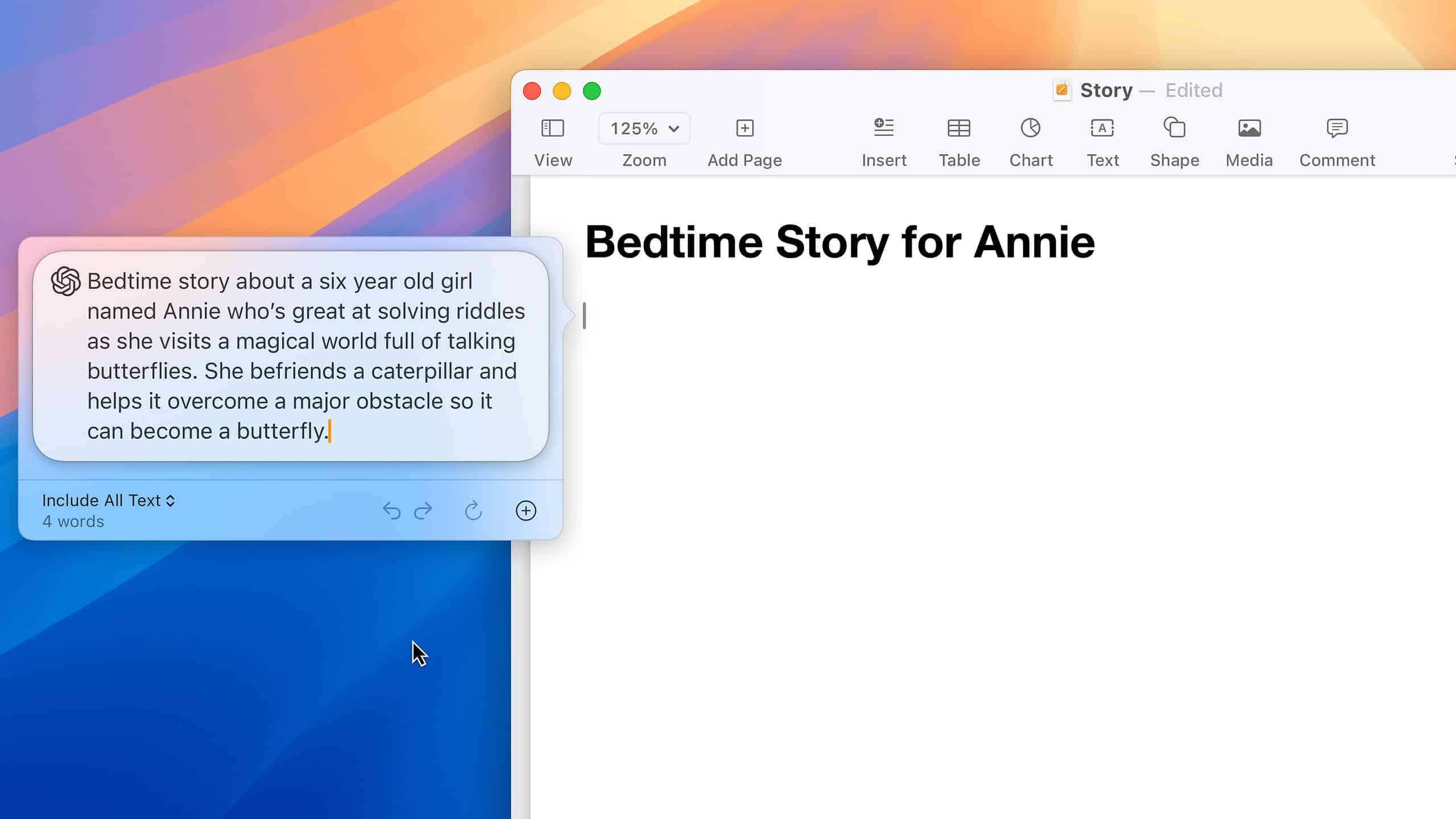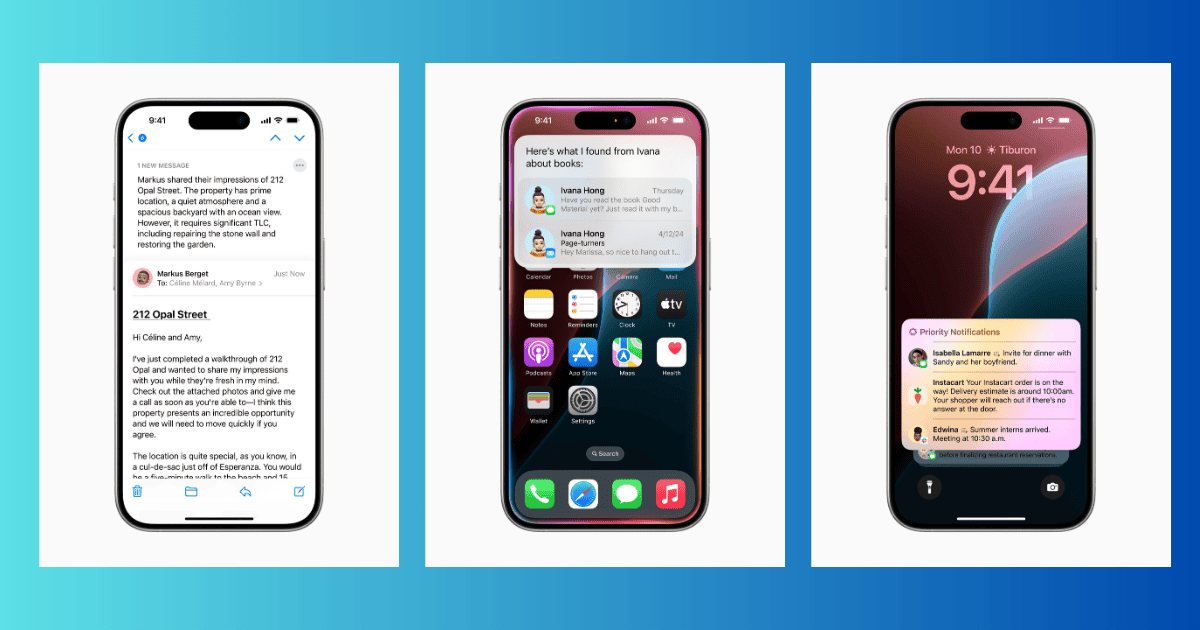Apple made a huge leap into the world of AI at WWDC 2024, and many of its popular apps will be overhauled significantly this fall. Among them, Siri now looks like it is finally living up to its potential after years of being seemingly ignored.
The company was under significant pressure to start using AI more prominently, with competitors like Samsung and Microsoft already integrating these features into their devices. Apple has certainly made significant strides with its new tools, but are they enough to close the AI gap on its competitors?
Today, I’ll investigate whether Apple has done enough to keep up the pace with its rivals in the AI space.
Where Apple Has Closed the AI Gap on Its Rivals
1. ChatGPT Partnership

Apple’s partnership with OpenAI will see ChatGPT integrated within macOS Sequoia, iOS 18, and iPadOS 18 (all on selected devices). While you can download and access ChatGPT on non-Apple devices, this is a huge step forward. The native integrations will bring ChatGPT directly to Apple users without needing to access the app or website, and it’s even available within Siri.
You can use Microsoft Copilot on Windows computers. From personal experience, I think that ChatGPT is better at most generative AI actions than Copilot. More importantly, I feel like ChatGPT’s Siri integration will be more user-friendly. Learn more about ChatGPT’s Apple integration.
2. Summarization
The Samsung Galaxy S24 has summarization available in the Notes app, and considering that many tools have introduced similar AI features online, it felt like it was about time that Apple did the same.
Apple will introduce summaries in its Notes app, which will be especially useful if you’re anything like me and like to put lots of information in your saved notes. But that’s not all; Apple Intelligence will also summarize emails in your inbox, and you can summarize content that you send to others.
In my opinion, though, notification summaries are the most practical application of AI summarization. I’m looking forward to having my notifications briefly summarized and being able to clear anything that I don’t think is relevant more quickly.
3. Writing Features

Another way that Apple has closed the AI gap compared to its rivals is with its new writing features. Being able to change the tone of your messages will benefit several people, especially those who use their Macs, iPhones, and iPads for work. What’s also cool is that you’ll be able to proofread your text – adding a nice layer to predictive text (or even a replacement if you’d rather switch off this tool).
Being able to rewrite your text and generate stories will also significantly benefit users.
4. Upgrading Siri Was Necessary
Siri’s release in October 2011 was groundbreaking, but it seemed a bit weird that Apple didn’t make significant changes to the tool for almost 13 years. But with its fall 2024 updates, that will all change. Siri has received a huge overhaul, and thanks to better natural language processing, you should find what you need – and perform your desired actions – much easier.
Apple users will also benefit from Siri’s ability to consider the context of the conversation and perform the necessary next steps. For example, in the WWDC announcement, Apple used an example where they checked the weather in a location, and the person then planned a hike there.
Where Does Apple Fall Short?
1. Multilingual AI
While Siri’s earlier features are available across multiple languages, Apple Intelligence is only going to be accessible on devices with US English as the main language to begin with. This is quite disappointing when you think that Samsung has real-time translation capabilities.
Apple Intelligence will undoubtedly roll out to more languages and markets in the future, but until that happens, these features will only go so far.
2. Advanced AI Photo and Video Features
Apple’s search and object removal features were a big step forward, but compared to its competitors, there’s still a long way to go. For example, on the Google Pixel, you can change facial expressions.
Apple also falls short compared to the Samsung Galaxy’s ability to turn normal videos into slow-motion. It’s unsurprising that Apple Intelligence didn’t prioritize these as it needed to introduce several other tools, so hopefully, we’ll see these features introduced in the future.
3. Rolling Out to More Devices
Another big limitation of Apple’s big AI features is that they aren’t rolling out to every device compatible with iOS 18, iPadOS 18, or macOS Sequoia. Instead, they are available only on Apple chip iPads and Macs – along with the 15 Pro, and Pro Max.
Yes, you can find basic AI features – such as the earlier version of Siri and auto-adjusting photos – on older devices. However, for Apple to truly defeat its opponents in this area, it needs to make Apple Intelligence available to a broader number of devices.
Again, Apple is clearly taking things slow – and considering that many of its features are new, that’s probably a wise idea. Over time, I’d expect more devices to get Apple Intelligence (whether that’s rolling it out to older devices or newer ones simply getting the tool). Until that happens, it will be hard for Apple to stand up to its competitors.
So… Is Apple’s AI on Par With Its Rivals?
Don’t get me wrong – Apple Intelligence was certainly a big step forward and a necessary one at that. The company has clearly put a lot of work in the background to ensure that its AI features aren’t a mere flash in the pan, and I respect that they’ve taken their time to deliver what looks like genuine quality.
In the long term, these features will undoubtedly help Apple close the gap on its rivals. However, in the short term, improvements are still necessary. Rolling out Apple Intelligence to other languages would be a huge help, as would adding more comprehensive photo and video editing tools (along with adding AI to more devices). It’s also worth noting that some of Apple Intelligence’s new features might look familiar.
The good news for Apple is that at the very least, it has a solid base to work from. Many of its AI features have practical use for normal people, making them more likely to be impactful.
